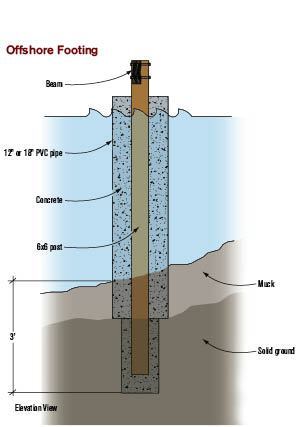Building a stationary dock in a pond can be a great way to enhance the beauty and functionality of your outdoor space. Whether you want to create a peaceful spot for fishing, a platform for enjoying the view, or a place to launch a small boat, a well-built dock can add a lot of value to your property. In this guide, we’ll walk you through the steps to build your own stationary dock in a pond.
1. Determine the Location and Size
First, you’ll need to determine the ideal location for your dock. Consider the depth of the water, the proximity to any obstacles, and the overall aesthetics of the area. Once you’ve chosen the location, measure and mark the size of the dock you want to build.
2. Gather Your Materials
Next, gather all the necessary materials for the construction of your dock. This may include pressure-treated lumber for the frame and decking, galvanized or stainless steel hardware, concrete footings, and any additional accessories such as handrails or cleats.
3. Prepare the Site
Clear the area where the dock will be built, removing any rocks, debris, or vegetation. Level the ground and mark the locations for the support posts. If the pond bed is soft, you may need to install pilings for added stability.
4. Build the Frame
Construct the frame of the dock using pressure-treated lumber. Use galvanized or stainless steel hardware to secure the frame components together. Ensure that the frame is level and square before proceeding to the next step.
5. Install Support Posts
Dig holes for the support posts and set them in place using concrete footings. Make sure the posts are plumb and secure, as they will bear the weight of the dock and provide stability against the water’s movement.
6. Add Decking and Accessories
Once the frame and support posts are in place, add the decking material to create the surface of the dock. You can also install any desired accessories, such as handrails or cleats, to enhance the functionality and safety of the dock.

Credit: deerhunterforum.com
7. Perform Safety Checks
Before using the dock, perform thorough safety checks to ensure that all components are securely fastened and that there are no hazards present. Test the stability of the dock by applying weight and ensure that it can withstand normal usage without any issues.

Credit: m.youtube.com
8. Maintenance and Upkeep
After the dock is built, it’s important to perform regular maintenance to keep it in good condition. This may include cleaning the surface, inspecting for any signs of wear or damage, and making any necessary repairs or replacements to ensure the longevity of the dock.
Building a stationary dock in a pond can be a rewarding project that adds both beauty and functionality to your outdoor space. By following these steps and taking the time to do the job right, you can create a sturdy and reliable dock that will provide enjoyment for years to come.




